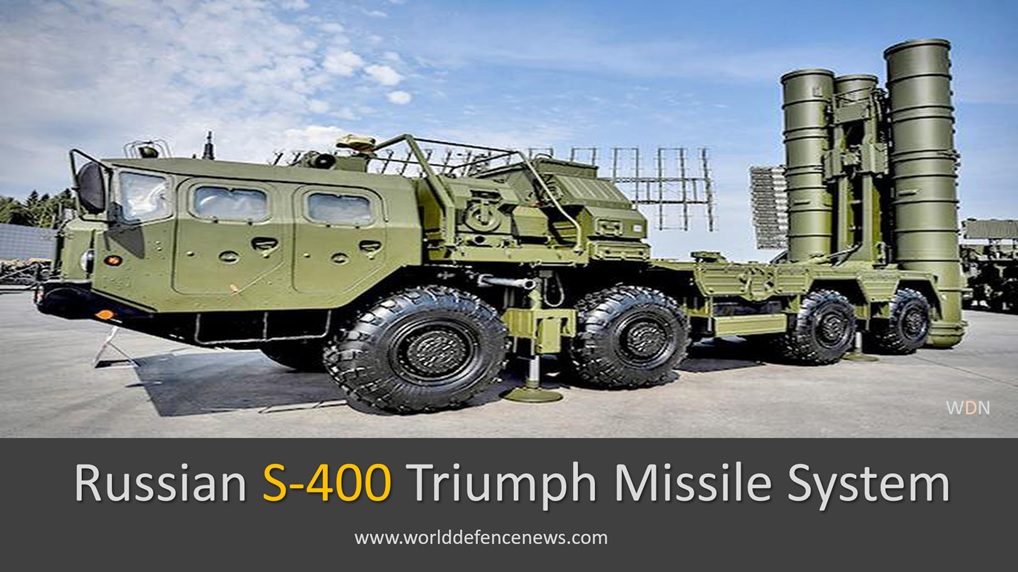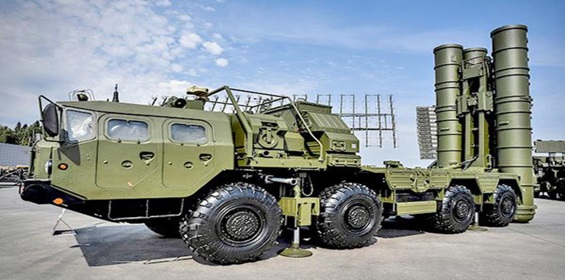
S-400 Missile
Formidable Russian S-400 Triumph Most Advanced SAM Missile System
The Russian S-400 Missile Triumph is the world’s most advanced air Defence system. This formidable surface-to-air (SAM) missile system is considered one of the best and highly sophisticated air defense systems. This missile system can shootdown and neutralize wide range of aerial threats such as fighter jets, UAV’s, ballistic missiles and other such aerial targets. The S400 operators include Russia, India and China.
The S-400 missile system is a mobile, long-range air defense system developed by Russia’s Almaz Central Design Bureau in the late 1990s. It is designed to detect, track, and shoot down aircraft, missiles, and other aerial threats up to a range of 400 kilometres (250 miles) and at an altitude of up to 30 kilometres (19 miles).
The system is composed of a network of radars, command and control centres, launchers, and missiles. The radars can detect and track multiple targets simultaneously, while the launchers can fire several types of missiles, including long-range and medium-range missiles, to intercept the targets.
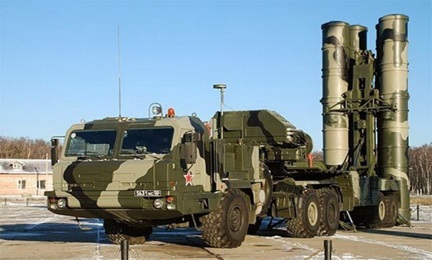
The S-400 system has been described as one of the most advanced air defense systems in the world, with superior capabilities compared to its predecessor, the S-300 system. It has been deployed by Russia and several other countries, including China, India, and Turkey.
The system’s deployment and usage have been the subject of controversy, with some countries expressing concern over its potential use against them, while others have sought to acquire the system to enhance their air defense capabilities.
The S-400 missile system is a significant development in the field of air defense technology, with important implications for military and geopolitical strategies.
What Makes S-400 SAM The Most Feared Air Defense System ?
The S-400 is considered one of the most feared air defense systems in the world because it is a highly advanced and capable system that can detect, track, and destroy a wide range of aerial threats.
The S-400 air defense system is a highly capable and versatile system that is difficult to counter. Its long-range capabilities, multiple target engagement, and advanced technology make it a formidable air defense system that is highly effective in protecting against a wide range of potential threats.
Here are some of the key reasons why the S-400 is so highly regarded:
- Long Range: The S-400 has a long-range radar system that can detect and track targets up to 600 kilometers away, giving it a significant advantage in detecting and engaging targets at long distances.
- Multiple Target Engagement: The system can engage multiple targets simultaneously, allowing it to protect a large area from potential threats.
- Multiple Missile Types: The S-400 has several types of missiles that can be used to intercept different types of targets, including aircraft, drones, and ballistic missiles.
- High Mobility: The S-400 system is highly mobile and can be transported to different locations quickly, making it difficult for potential attackers to locate and target the system.
- Advanced Technology: The S-400 incorporates advanced technology, including sophisticated radar systems, advanced command and control centres, and highly accurate missiles.
- Interoperability: The S-400 system can operate in coordination with other air defense systems, allowing for a comprehensive air defense network.
Russian S-400 Missile System
How S-400 Works ?
The S-400 missile system is a surface-to-air missile system developed by Russia. It is designed to detect, track, and destroy a variety of aerial threats, including aircraft, missiles, and drones. The system is equipped with highly advanced radar that provides highly effective capability to the system to scan, track and neutralize wide range of targets.
Here is a brief overview of how the S-400 missile system works:
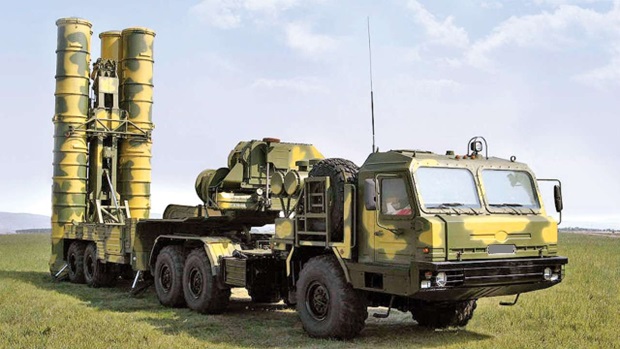
1. Radar Detection
The S-400 uses powerful radars to detect incoming targets. The system has multiple radars, including a phased-array radar that can detect targets at long ranges.
2. Target Tracking
Once a target is detected, the S-400’s radar system tracks its movements and calculates its trajectory. This information is then transmitted to the system’s command and control centre.
3. Threat Identification
The command and control centre analyses the tracked target data and determines whether the target is friendly or hostile. If the target is identified as a threat, the system will prioritize it for interception.
4. Missile Launch
The S-400 can launch a variety of missiles, including long-range and short-range missiles. The missile launcher is automated and can rapidly fire multiple missiles at different targets simultaneously.
5. Target Interception
The S-400 missile is designed to intercept and destroy the target in mid-air. The missile’s guidance system uses information from the radar to track the target and adjust its trajectory for maximum accuracy.
The S-400 missile system is a complex and sophisticated system that is designed to provide effective air defense against a wide range of threats.
S-400 Missile System Components
The S-400 missile system is an advanced air defense system developed by Russia. The missile system is a highly advanced and capable air defense system that is designed to protect against a wide range of airborne threats, including aircraft, cruise missiles, and ballistic missiles.
Its key components include:
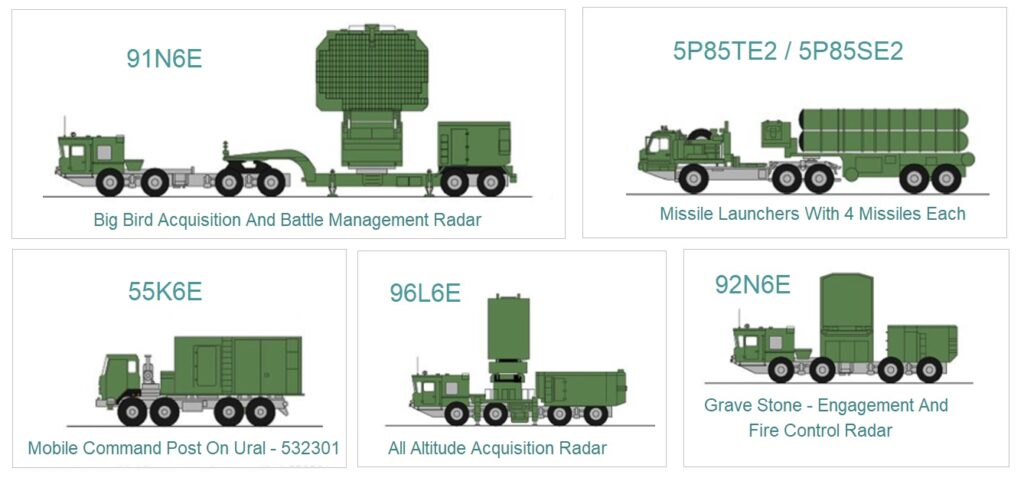
1. Radar Systems
The S-400 system is equipped with several types of radar systems, including the 96L6 all-altitude surveillance radar, the 91N6E all-altitude surveillance radar, and the 92N6E Grave Stone multi-functional engagement and and fire control radar. These radars work together to provide long-range surveillance and target acquisition capabilities.
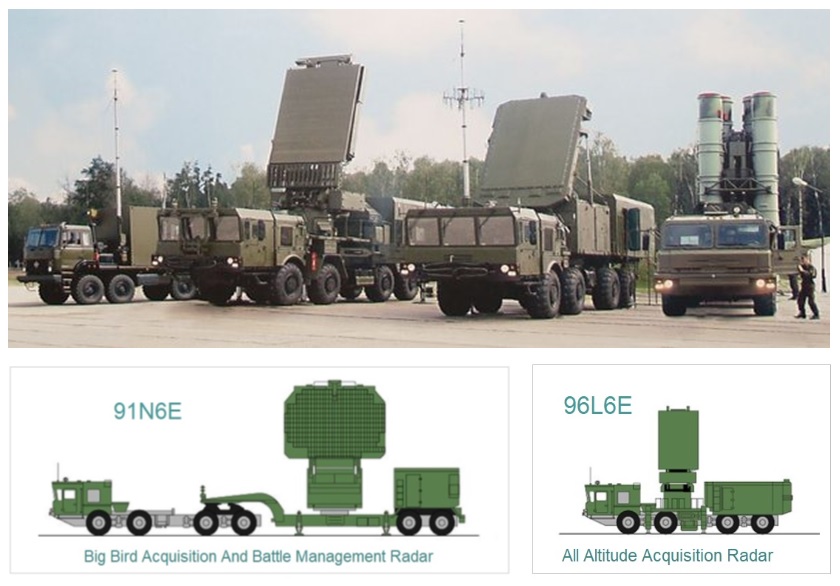
2. Missile Launchers
The S-400 system has several different types of missile launchers, including the 5P85TE2 self-propelled launcher, the 5P85SE2 wheeled launcher, and the 5P85S static launcher. These launchers are designed to launch different types of missiles, including the 48N6E3, 40N6, and 9M96E2 missiles.
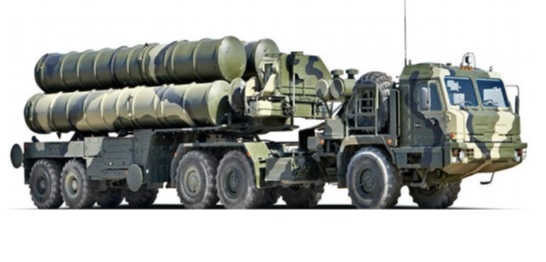
The S-400 missile system has several types of missile launchers. All three types of launchers can be used to launch different types of missiles, including the 48N6E3, 40N6, and 9M96E2 missiles. The 48N6E3 missile has a range of up to 250 km and can engage targets at altitudes of up to 30 km. The 40N6 missile has a range of up to 400 km and can engage targets at altitudes of up to 185 km. The 9M96E2 missile has a range of up to 120 km and can engage targets at altitudes of up to 30 km.
The S-400 missile launchers are designed to be highly mobile, and they can be transported quickly and easily to different locations as needed. They can also be integrated with other components of the S-400 system, such as the radar and command and control center, to provide a comprehensive air defense capability.
3. Command And Control Centre
The S-400 system is operated from a command and control centre, which is responsible for coordinating the different components of the system and issuing orders to engage incoming targets. The command and control centre is equipped with advanced communication systems and data processing capabilities.
4. Transport Vehicles
The S-400 system is highly mobile and can be transported on a variety of different vehicles, including the BAZ-64022 8×8 wheeled vehicle and the MZKT-7930 8×8 wheeled vehicle. These transport vehicles are designed to transport the missile launchers and radar systems to different locations quickly and efficiently.
5. Electronic Warfare Systems
The S-400 missile system is equipped with a range of advanced electronic warfare (EW) systems, which are designed to detect and disrupt enemy radar and communication systems.
The S-400’s EW systems are designed to help protect the system from electronic attacks by disrupting the operation of enemy radar and communication systems. By doing so, the S-400 is able to maintain a high level of situational awareness and effectively engage incoming threats.
Some of the key EW systems used in the S-400 include:
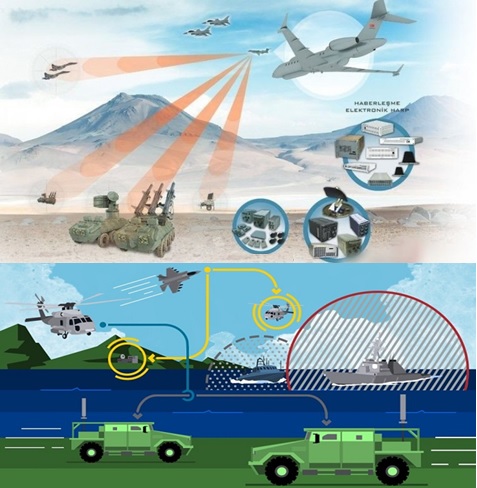
- 55K6E command post: This is the central command and control station for the S-400 system. It is responsible for managing the different components of the system and coordinating the engagement of incoming targets. The 55K6E is equipped with advanced communication systems and data processing capabilities, which allow it to effectively manage the S-400’s EW systems.
- 91B6E automated jamming station: This system is used to jam and disrupt enemy radar systems. It operates by transmitting high-powered radio signals that interfere with the operation of enemy radar systems, making it more difficult for them to detect and track the S-400 system.
- 96L6-TsP jamming station: This system is used to jam and disrupt enemy communication systems. It operates by transmitting radio signals that interfere with enemy communication systems, making it more difficult for them to coordinate their activities.
- Krasukha-4 EW system: This is an additional EW system that can be integrated with the S-400 system. It is a mobile system that is designed to jam and disrupt enemy radar and communication systems over a wide area. The Krasukha-4 system can be deployed in conjunction with the S-400 to provide additional EW capabilities.
tation.

